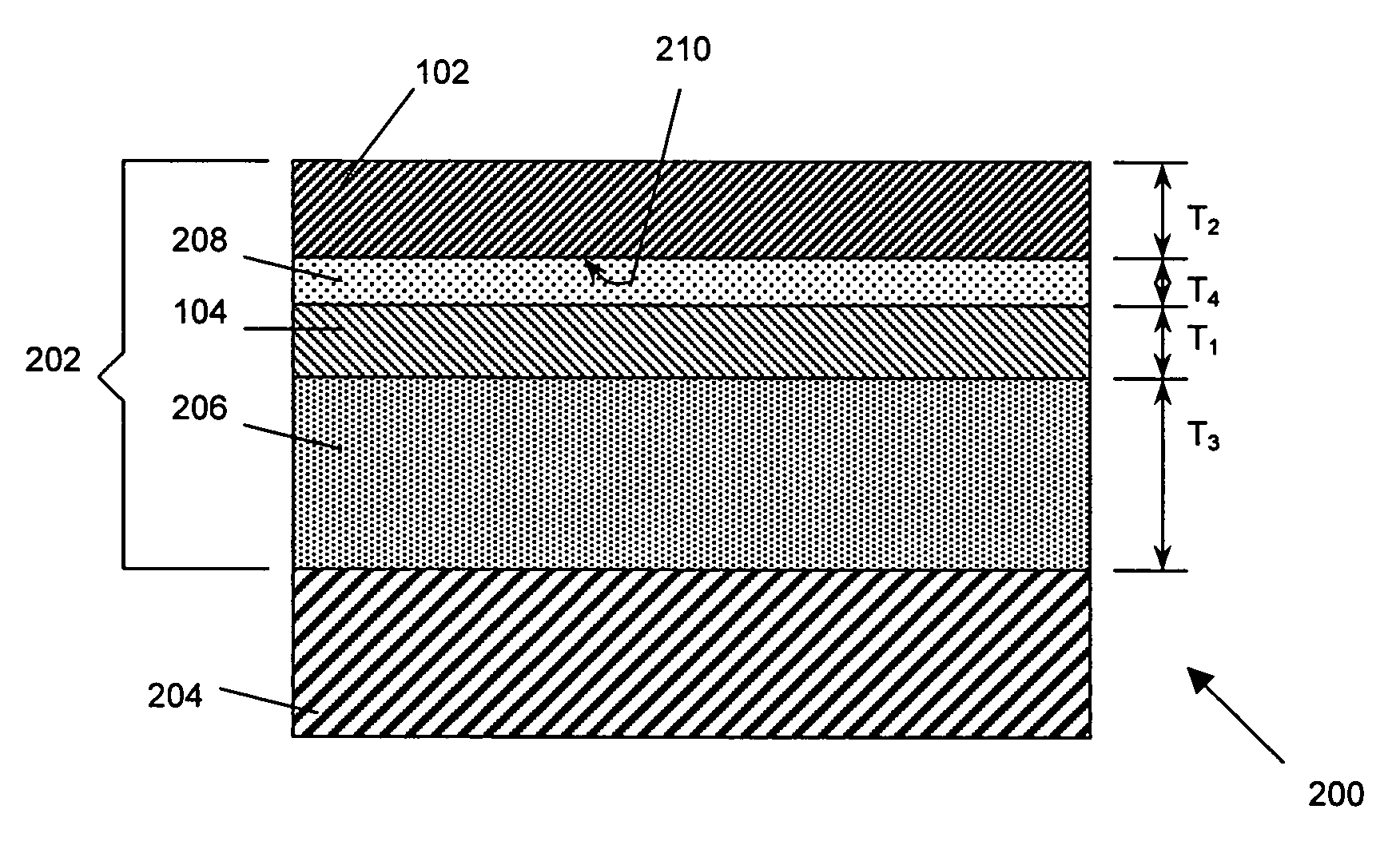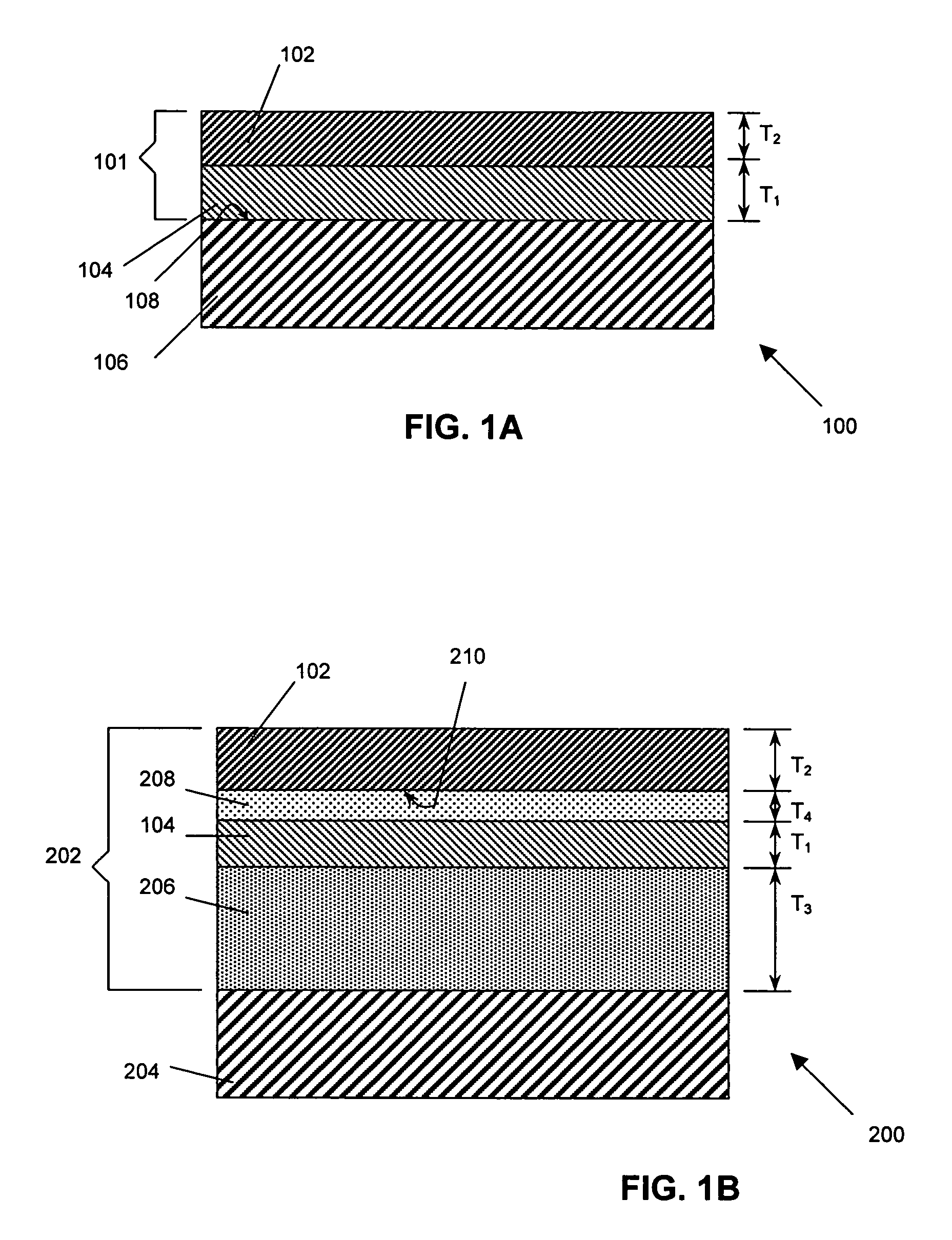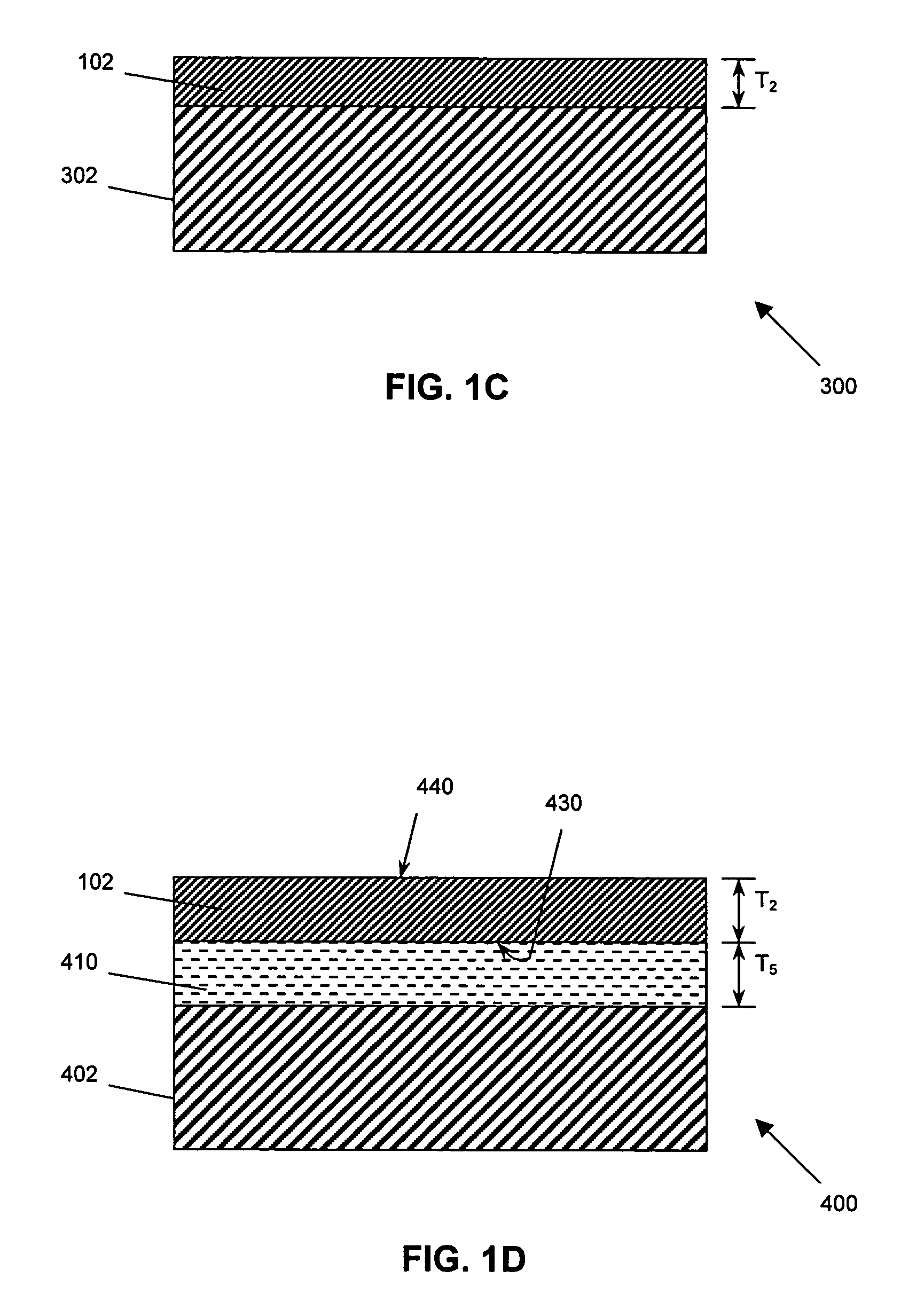Methods for preserving strained semiconductor substrate layers during CMOS processing
a technology of semiconductor substrates and processing methods, applied in the field of semiconductor substrates, can solve the problems of increasing the complexity and functionality of semiconductor structures, new processing challenges, and limited processing windows for such structures, and achieves the effects of low processing cost, low cost, and high quality
- Summary
- Abstract
- Description
- Claims
- Application Information
AI Technical Summary
Benefits of technology
Problems solved by technology
Method used
Image
Examples
Embodiment Construction
[0033]In accordance with various embodiments of the present invention, layers deposited on semiconductor substrates replace traditionally grown layers, thereby reducing the consumption of substrate surface material. Various features of the invention are well suited to applications utilizing MOS devices that include, for example, Si, Si1−xGex, and / or Ge layers in and / or on a substrate. The term “MOS” is used herein to refer generally to semiconductor devices that include a conductive gate spaced at least by an insulating layer from a semiconducting channel layer. The terms “SiGe,”“Si1−xGex,” and “Si1−yGey” refer to silicon-germanium alloys.
[0034]Referring to FIG. 1A, which illustrates an epitaxial wafer 100 suitable to use with the present invention, several layers collectively indicated at 101, including a strained layer 102 and a relaxed layer 104, are disposed over a substrate 106. The substrate 106 comprises a semiconductor, such as silicon, silicon deposited over an insulator, s...
PUM
| Property | Measurement | Unit |
|---|---|---|
| thickness | aaaaa | aaaaa |
| surface roughness | aaaaa | aaaaa |
| surface roughness | aaaaa | aaaaa |
Abstract
Description
Claims
Application Information
 Login to View More
Login to View More - R&D
- Intellectual Property
- Life Sciences
- Materials
- Tech Scout
- Unparalleled Data Quality
- Higher Quality Content
- 60% Fewer Hallucinations
Browse by: Latest US Patents, China's latest patents, Technical Efficacy Thesaurus, Application Domain, Technology Topic, Popular Technical Reports.
© 2025 PatSnap. All rights reserved.Legal|Privacy policy|Modern Slavery Act Transparency Statement|Sitemap|About US| Contact US: help@patsnap.com



